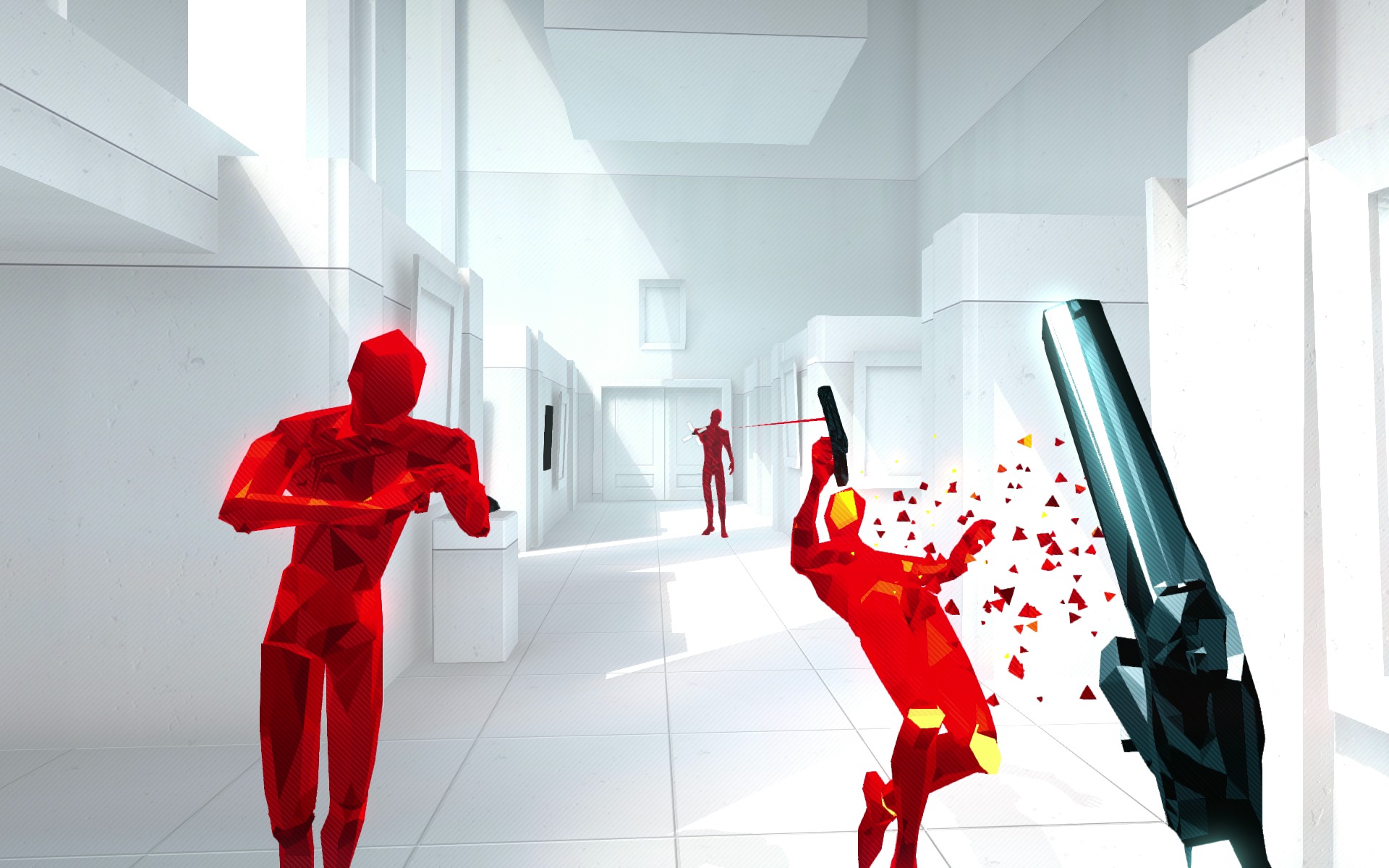Time-shifting FPS Superhot makes you feel like a frag god

We write about FPSes each week in Triggernometry, a mixture of tips, esports, and a celebration of virtual marksmanship.
In shooters, a single mouse-click or press of a key represents a cognitive football snap. Choosing when to move and fire is a second-by-second symphony of synapses orchestrated by your reflexes. That click or key hit is the biomechanical output of a fireworks show hosted in your brain. It’s felt when you’re the last man of a single-elimination round, or when you score a kill that can only be attributed to “intuition” or “game sense,” vague synonyms for the fast decision-making our skulls are capable of.
Superhot, the time-bending FPS where bullets and baddies only move when you do, embraces the mental gymnastics of the genre as its core design. Parallels to artsy action films such as The Matrix or John Woo shootfests are obviously woven into the visual experience: the graceful, slow-mo tumble of glass shards; bullet trails streaking against the gray and white backgrounds of each room with deadly red lines; ragdolling corpses shattering into polygonal pieces on the floor.
Those theatrics also convey how your awareness seemingly amplifies to a superhuman degree while in a groove. Think of a showy Max Payne dive. The effect is the same: a figurative lurch in the time it takes for seconds to tick by while a player acts on instinct for a decisive move. Each pause is an abstract snapshot that could’ve been lifted from CS:GO, TF2, Battlefield, or any other multiplayer arena. Superhot’s combat plays out like a stop-motion depiction of the flow between anticipation, action, and reaction so integral to shooters.
The best way Superhot demonstrates this is through its replay feature, a recap played back at the end of each map in normal speed. Simple actions such as moving the crosshair on an enemy’s head or stepping out of the path of incoming lead transform into a seamless, long cut of chained actions from start to finish. It’s a neat reviewing tool akin to a killcam showing your last few moments, and it shows how each reaction is naturally steeped in awareness of consequence. Above that, it makes you look really, really cool.
Superhot’s replay system truly shines after rounds of endless mode, a theater for surviving against waves of infinitely spawning enemies. Staying alive demands premonitory strategy; simply twisting away from a cloud of assault rifle fire isn’t enough as foes often spawn behind you and around blind corners. Mentally tracing an optimal movement pattern is key—get too predictable, and the computer will start cleverly leading its shots ahead of your intended path.

The stress is intense, comparable to playing a round of team deathmatch with everyone against you. I was also fascinated by how the battles’ red-light-green-light style effectively spotlighted my individual, manual moves as echoes of instinctive actions in normal-speed shooters. The replay is an amazing payoff. At one point, with my eyes pointed downward, I didn’t even notice I had narrowly dodged three close-range shotgun blasts while scrambling for a dropped pistol.
Superhot’s replays make you look like a frag movie superstar almost every time, but they’re also a source of perspective. They decompress the mental magic that happens when we play conventional FPSes, letting us see the mental muscles that typically run on autopilot. Just as we’re not aware of our own breathing until we focus on it, so are we accustomed to the reflexive flick of a wrist for a headshot or the tap of the spacebar for a life-saving dodge. In Superhot, that clockwork of skill is front and center one click or key press at a time.
Keep up to date with the most important stories and the best deals, as picked by the PC Gamer team.
Omri Petitte is a former PC Gamer associate editor and long-time freelance writer covering news and reviews. If you spot his name, it probably means you're reading about some kind of first-person shooter. Why yes, he would like to talk to you about Battlefield. Do you have a few days?


